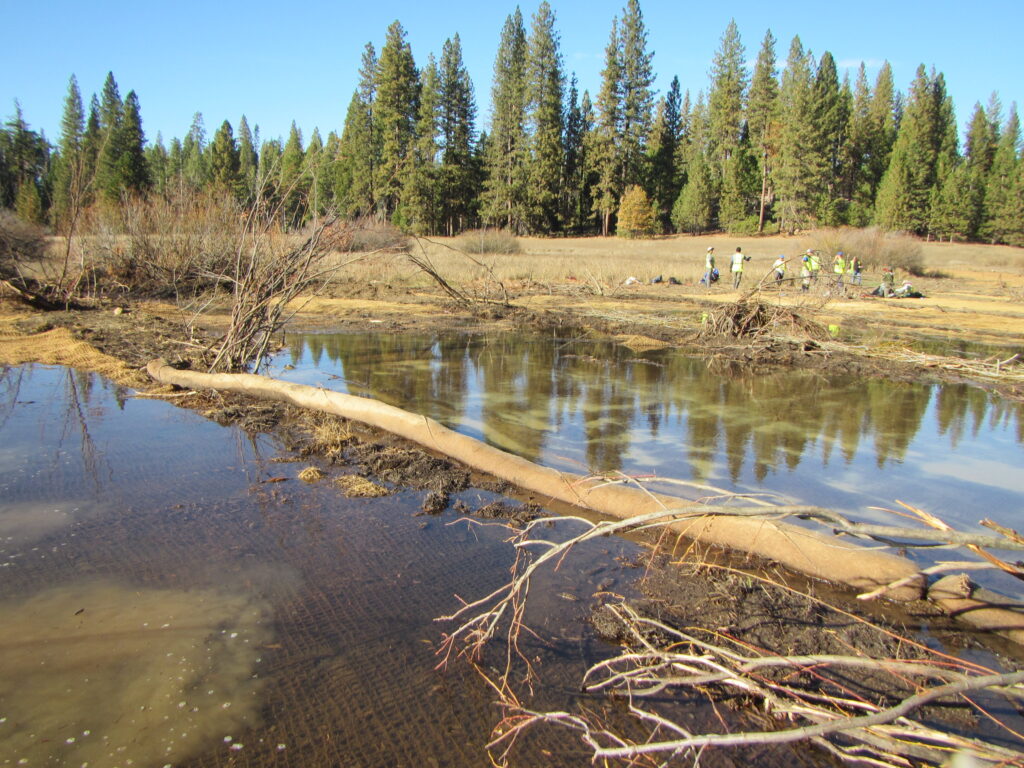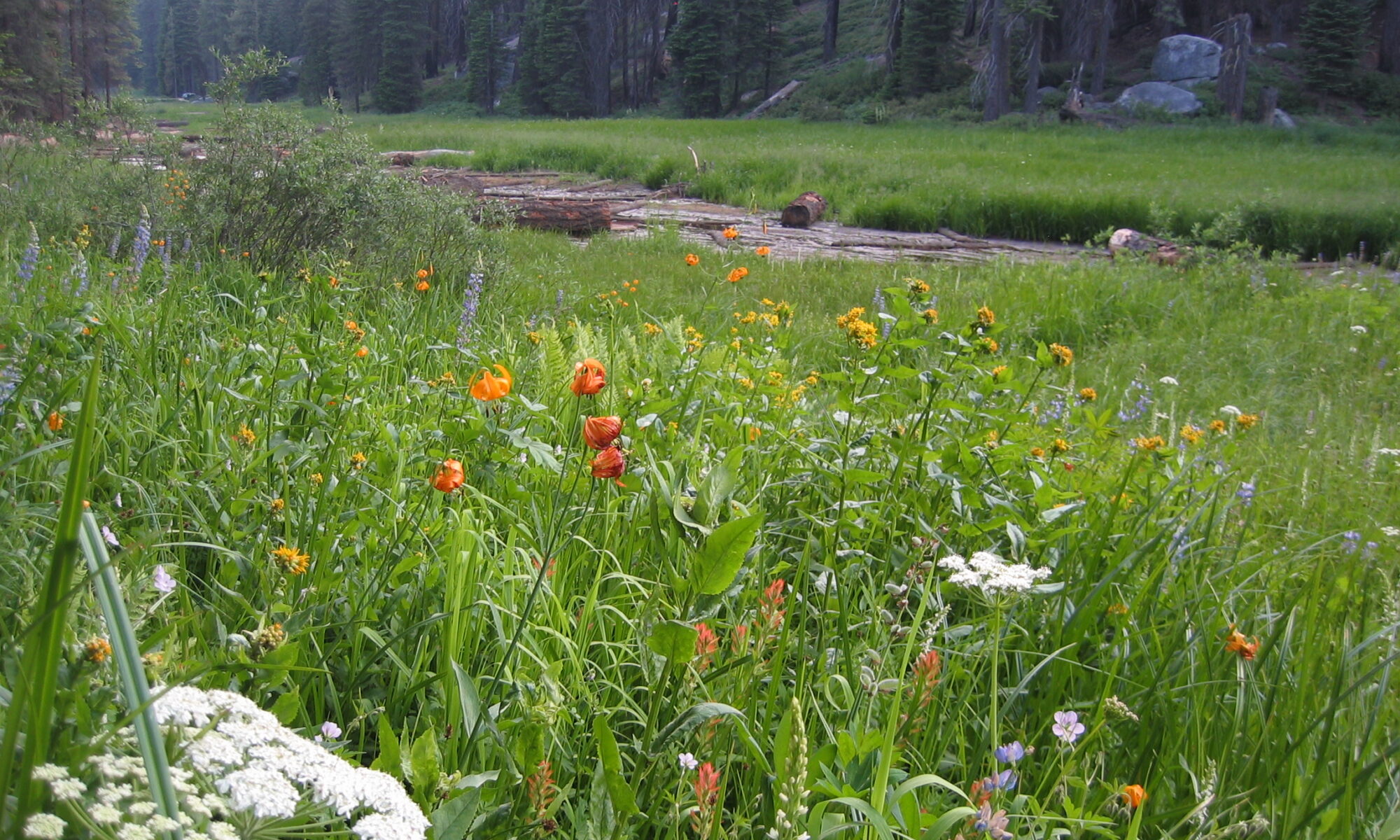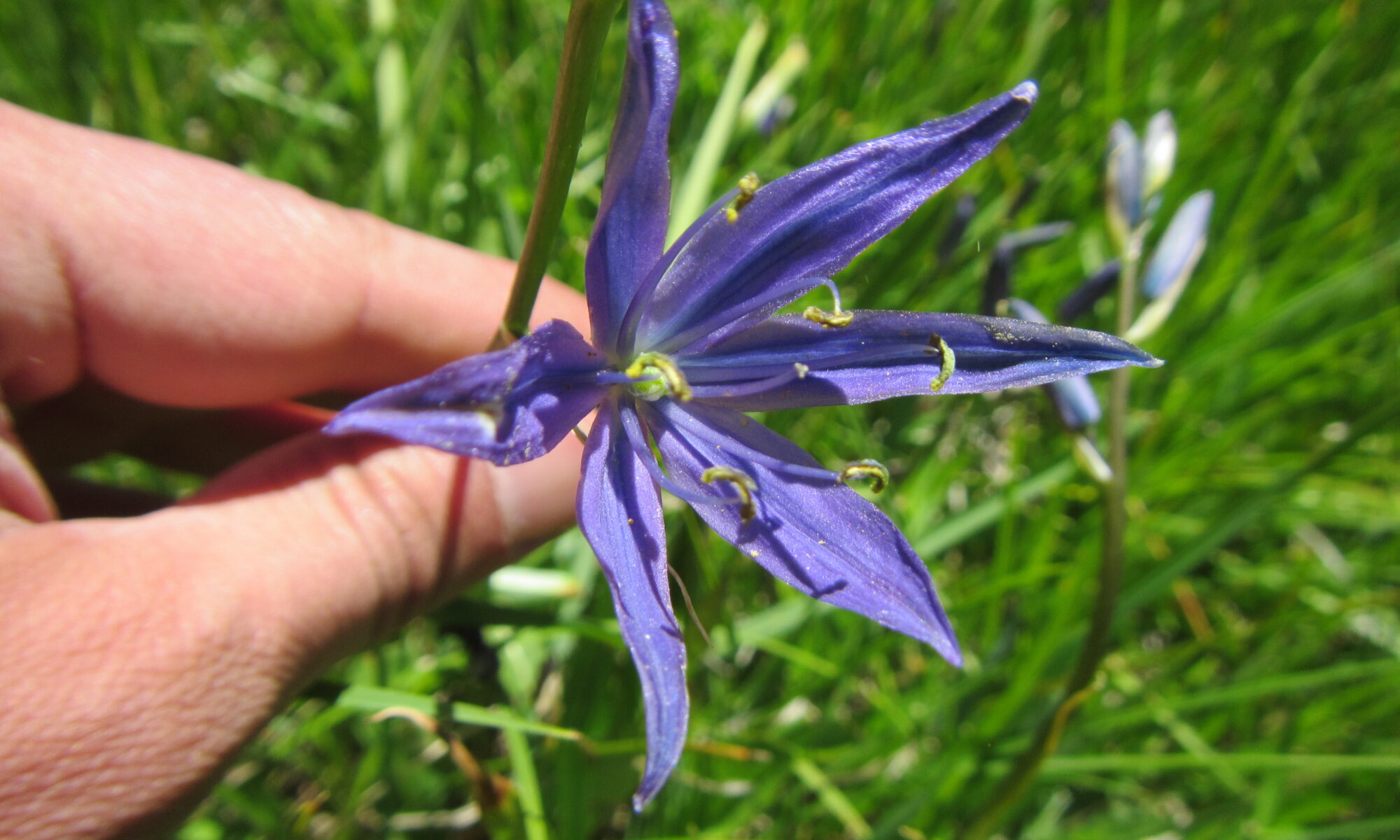Introducing camas lily (Camassia quamash), a lovely purple-flowered bulb that grows in wetlands throughout the western US. Individuals can live 15-20 years, and won’t flower until they’re 3 or 4 years old. Native Americans, especially in the Pacific Northwest, consumed the bulbs as a major part of their diet. They fed camas bulbs to Lewis and Clark’s starving exploration party as they moved across what is now western Montana, Idaho, and eastern Washington. This summer I’ll be starting a project at Weippe Prairie, part of the Lewis & Clark National Historic Trail and Nez Perce National Historical Park. Our main goal will be to reestablish the wetland and ecological conditions to create dense patches of camas lily. Prior to large-scale agriculture, camas covered entire wetland valleys for miles. On June 12, 1806 the Lewis and Clark expedition passed through Weippe Prairie on their return home and marveled that “the quawmash is now in blume and from the colour of its bloom at a short distance it resembles lakes of fine clear water, so complete is this deseption that on first sight I could have swoarn it was water.”
World Wetlands Day 2024Feb2
For World Wetlands Day here’s a picture of water flowing out onto the surface of Ackerson Meadow, Yosemite National Park for the first time in >100 years. It’s an honor and privilege to be a part of the team restoring this wetland by filling in an enormous erosion gully. https://www.nps.gov/yose/getinvolved/ackersonmeadow.htm


